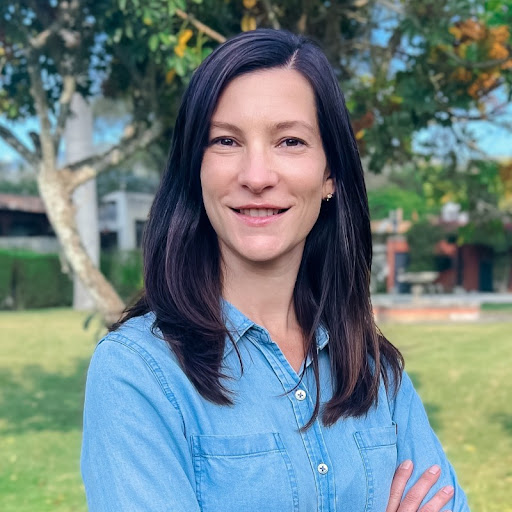Let’s play! Practical ways to increase agency through play in programming
Play provides children and youth with vital opportunities to grow. Play is universal and it is a unifier - it cuts across sectors and thematic areas. Agency through play is critical for all children and youth, and in particular those affected by crises where there can be uncertainty and a loss of control. Families can be displaced. School can be disrupted. There are less opportunities to connect with friends.
We think of agency as being able to make choices and decisions to influence events and to have an impact on one’s world. Supporting children and youth’s agency is about recognizing that all have the right to make choices and decisions and are capable of initiating and directing their own life and learning. Play promotes children and youth’s agency by providing them with opportunities to organize themselves, take initiative, negotiate, and make choices, among other skills.
While many practitioners are rightfully prioritizing children and youth's right to play to support their healing, holistic development, and learning, opportunities for agency through play are not always explicit. The authors feel that agency through play may not be intentional enough in the discourse about play nor in programming. To increase agency through play, we are providing considerations with examples from Save the Children.
Programmatic considerations

Give children and youth choices often.
Children and youth benefit from having the opportunity to choose.
- Provide time and space for free play. Free play is fun and encourages discovery, problem solving, taking initiative, and socialization which can increase resilience and self-esteem. For example, in Save the Children’s early childhood development (ECD) centers in Uganda, children have a dedicated time for free play each day. They can choose whatever activity they want to, including playing with toys, drawing, or practicing writing. The facilitator supports, engages, and shows interest in what children are doing, while being careful not to influence their choice.
- Provide open-ended materials. Children and youth benefit from the exploration and use of open-ended materials which allows them to cultivate their interests and self-expression, collaborate with peers, have fun, and develop diverse skills. For example, in Jordan, adolescent girls attending coding and robotics short-courses are designing and building their own apps and robots. Not only does this provide a rare opportunity for girls to access STEM education, the format of the sessions provides the space for girls to choose their own final products.
- Give opportunities for children and youth to choose topics of interest. With a self-directed learning approach, educators can provide children and youth with the opportunity to wonder and explore their world within overarching learning objectives. For example, in Save the Children’s HEART programme (Healing and Education through the Arts - an approach that provides psychosocial support), children are able to choose from any available art materials to draw, paint, color, or build.
- Offer children the choice of their own learning modality. In learning environments, educators can provide children and youth with choices on how they want to engage in their learning: individually, in pairs, or in groups. This also encourages positive social interactions and ownership over their learning.
Give children and youth control over their safe spaces and their bodies.
Providing children and youth with a safe space is the foundation for programming and promotes wellbeing. Within these spaces, we can respect children and youth’s sense of agency by collaborating with them to have greater control over their physical spaces.

- Provide children and youth with the opportunity to collaborate and identify how the physical space is organized. This can allow for creativity, self-expression, collaboration, and ownership over these spaces. Practitioners should also keep in mind safety issues that affect children of differing abilities and genders, including local cultural beliefs around play.
- Offer children and youth opportunities to make decisions on how to position themselves within spaces, including whether to sit or stand. This creates flexible environments where children and youth themselves can make decisions on how they best learn to meet their own individual needs. In Uganda, children in the ECD centers have the option of taking themselves to the quiet mat if they are feeling tired and need a rest or break.
Contextual considerations
The process of increasing agency through play is not a one-size-fits-all approach. Agency through play occurs along a spectrum, and the kinds of opportunities that children and youth have to express their agency depends on the context, cultural considerations including gender, physical environment, and the ratio of children to adults. Regardless of the kinds of choices practitioners provide, it is critical that the choices are relevant to children and youth's lives. This includes content and learning materials in learning environments such as learning aids, games, stories, songs, and materials for play (e.g. toys, manipulatives, art materials).
Organizational considerations

While it is important for children and youth to have the opportunity to play, adults also need to have opportunities within their organization to speak the ‘language of play’ with their colleagues. This offers adults an opportunity to express their own agency, as well as language, space, and experiences to reflect on their own perceptions of play and agency in education programming. Elevating an organizational culture of play by providing opportunities to practice play, rather than merely conceptualizing it for others, further grounds the work supporting children and youth.
Moving forward
Agency through play is important for all children and youth, and is especially important for those affected by crises so that they can cope, heal, connect, learn, and gain back some control over their lives. We hope that this discussion inspires practitioners to engage in more meaningful ways with play, and in particular, to create intentional opportunities for agency through play in their programming to support those whose lives have changed significantly and abruptly.
Learn more about Save the Children’s Championing Play programme supported by the LEGO Foundation.
The views expressed in the blog are the author’s own.
Author bios
 Yaëlle Stempfelet has experience in early childhood and education programming internationally in various contexts, and is a member of Wonder Lab. She holds an M.Ed. in International Education from the University of Massachusetts Amherst and an M.S. in Teaching Early Childhood General and Special Education from Touro College.
Yaëlle Stempfelet has experience in early childhood and education programming internationally in various contexts, and is a member of Wonder Lab. She holds an M.Ed. in International Education from the University of Massachusetts Amherst and an M.S. in Teaching Early Childhood General and Special Education from Touro College.
 Stephen Richardson has experience in education and youth sectors including designing, managing, and evaluating programs in crisis-affected contexts, and is a member of Wonder Lab. He holds an M.Ed. in International Education from the University of Massachusetts Amherst.
Stephen Richardson has experience in education and youth sectors including designing, managing, and evaluating programs in crisis-affected contexts, and is a member of Wonder Lab. He holds an M.Ed. in International Education from the University of Massachusetts Amherst.

Amy Parker has experience as an education specialist providing leadership, support and guidance across the education spectrum, including a focus on holistic learning and wellbeing in both development and crisis contexts. She currently works as the Senior Learning Through Play Advisor for Save the Children Denmark.



